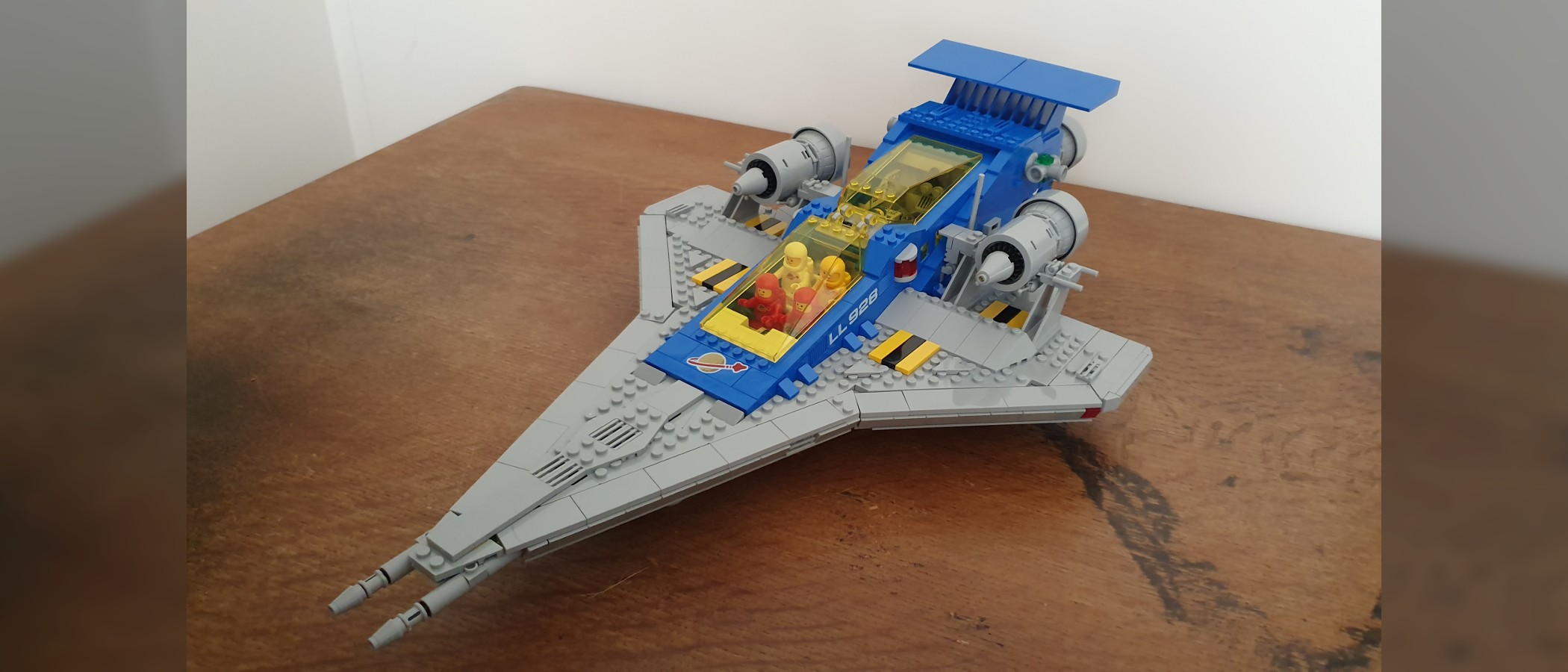Space Verdict
Space fans will love the new reimagined Lego Icons Galaxy Explorer, whether they’re familiar with the original model or it’s their first introduction. The design uses some clever techniques that are fun and intuitive to build. For its price it’s a great size, includes four fab minifigs, and there are no pesky stickers!
Pros
- +
Fun, intuitive build
- +
Some clever design techniques
- +
Competitive price
- +
Large size
- +
Strongly evokes the feel of Classic Space
Cons
- -
Canopies came scratched
- -
No baseplates or ground station like the original
Why you can trust Space.com
Price: $99.99/£89.99
Model number: 10497
Number of pieces: 1,254
Dimensions: 13 x 52 x 32cm (5 x 20.5 x 12.5 inches)
Recommended age: 18+
To celebrate Lego’s 90th anniversary, the Lego Group released a number of special sets under the banner ‘90 years of play,’ with the Lego Icons Galaxy Explorer being amongst those sets. So, prepare for a blast from the past with a modern twist as this is a superlative remake of the iconic Galaxy Explorer set (928/417) from 1979.
Although the Lego Group has in general ignored this kind of space set in recent years in favor of Lego Star Wars sets and NASA-inspired builds like these best Lego space sets, ‘Classic Space’ as it is referred to (specifically denoting the 1978–1987 period) retains its ardent fans.
The Lego Movie and The Lego Movie 2 reignited interest in Classic Space with the character of Benny and his anachronistic, broken, visor-less helmet. Hopefully, the positive reception that Lego Icons Galaxy Explorer has received will prompt the Lego Group to produce more sets in the same vein.
Lego Icons Galaxy Explorer review: Build
- Simple and satisfying build
- Clear instructions
- Two white and two red astronaut minfigures
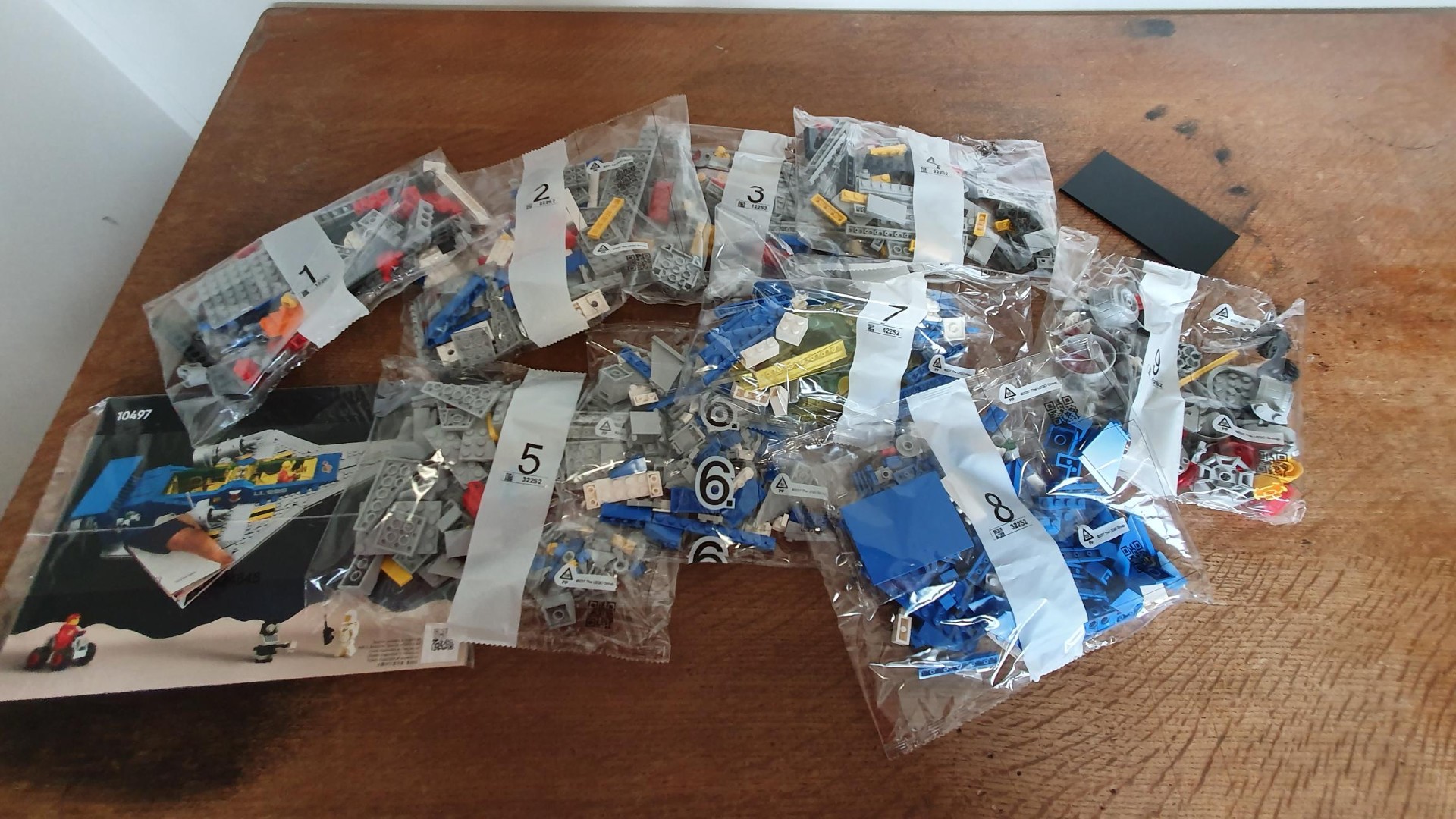
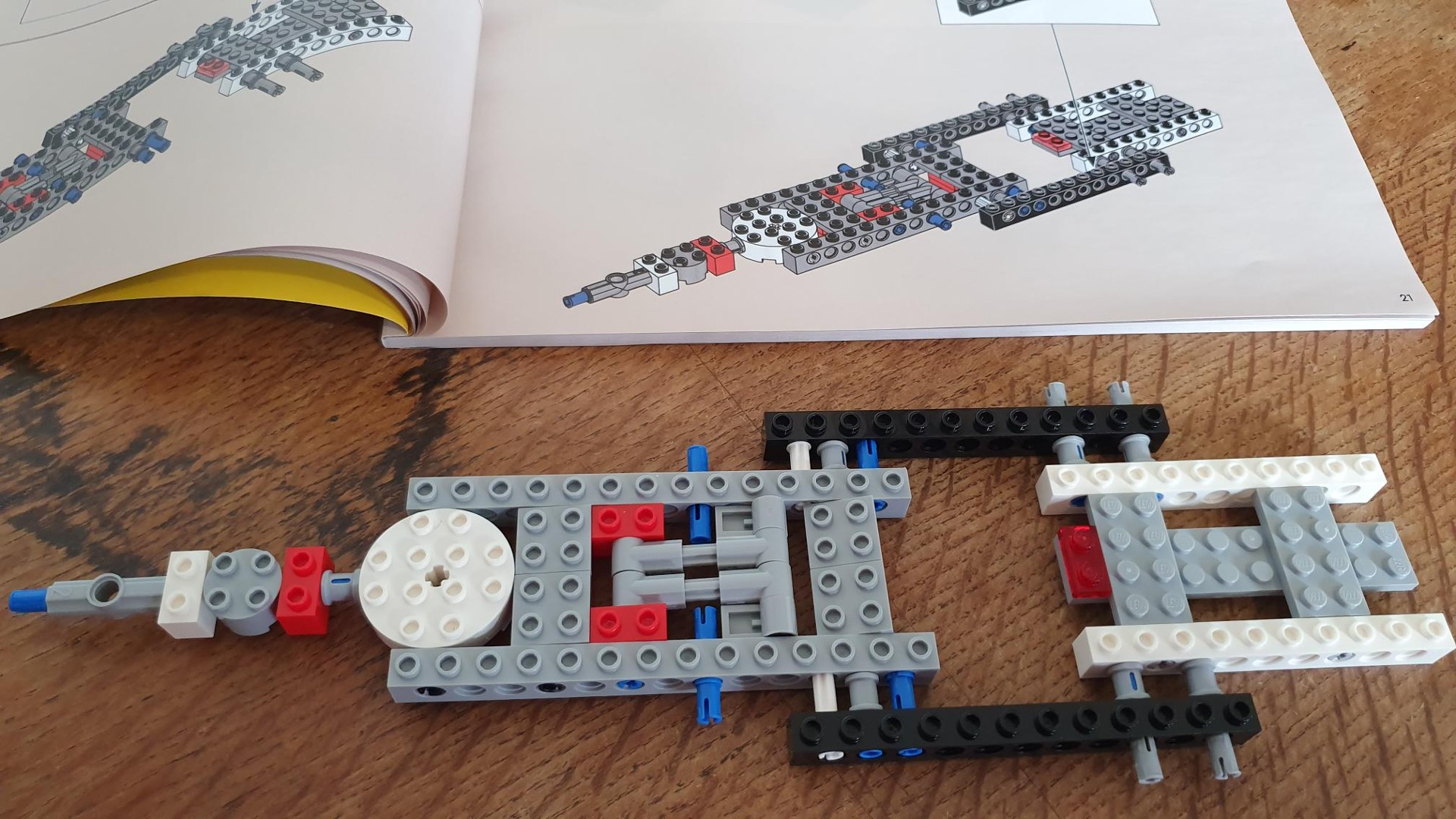
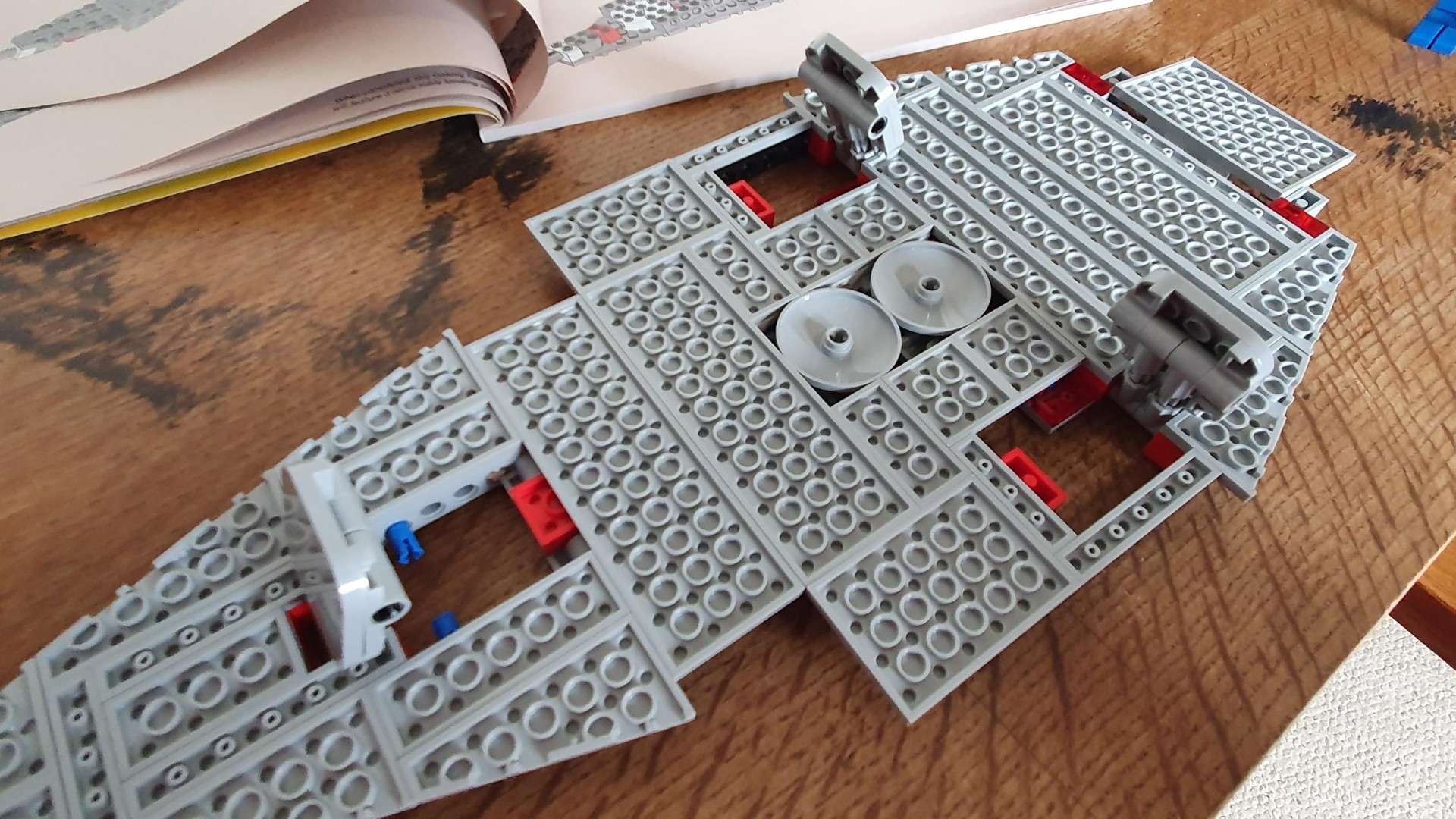
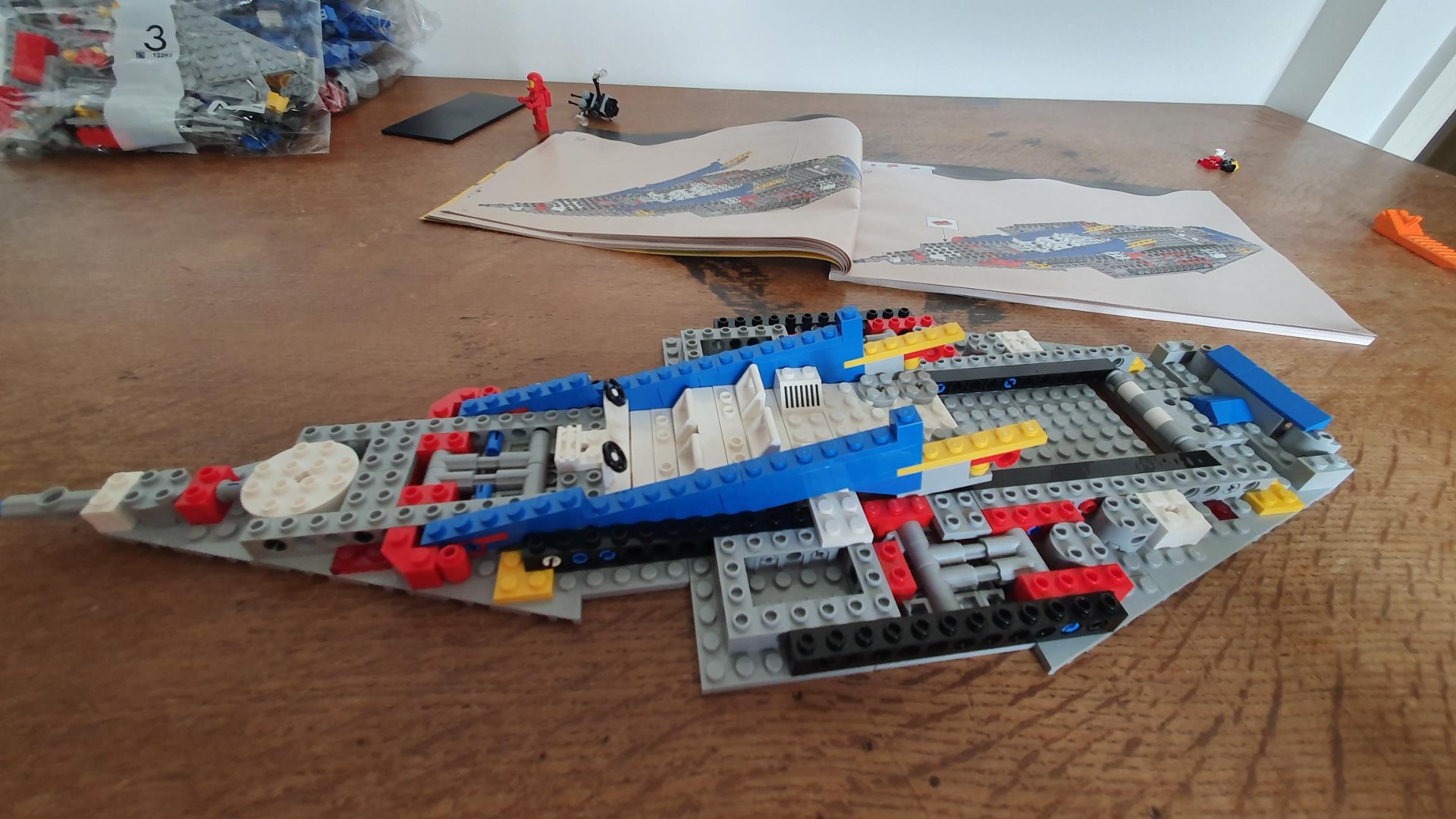
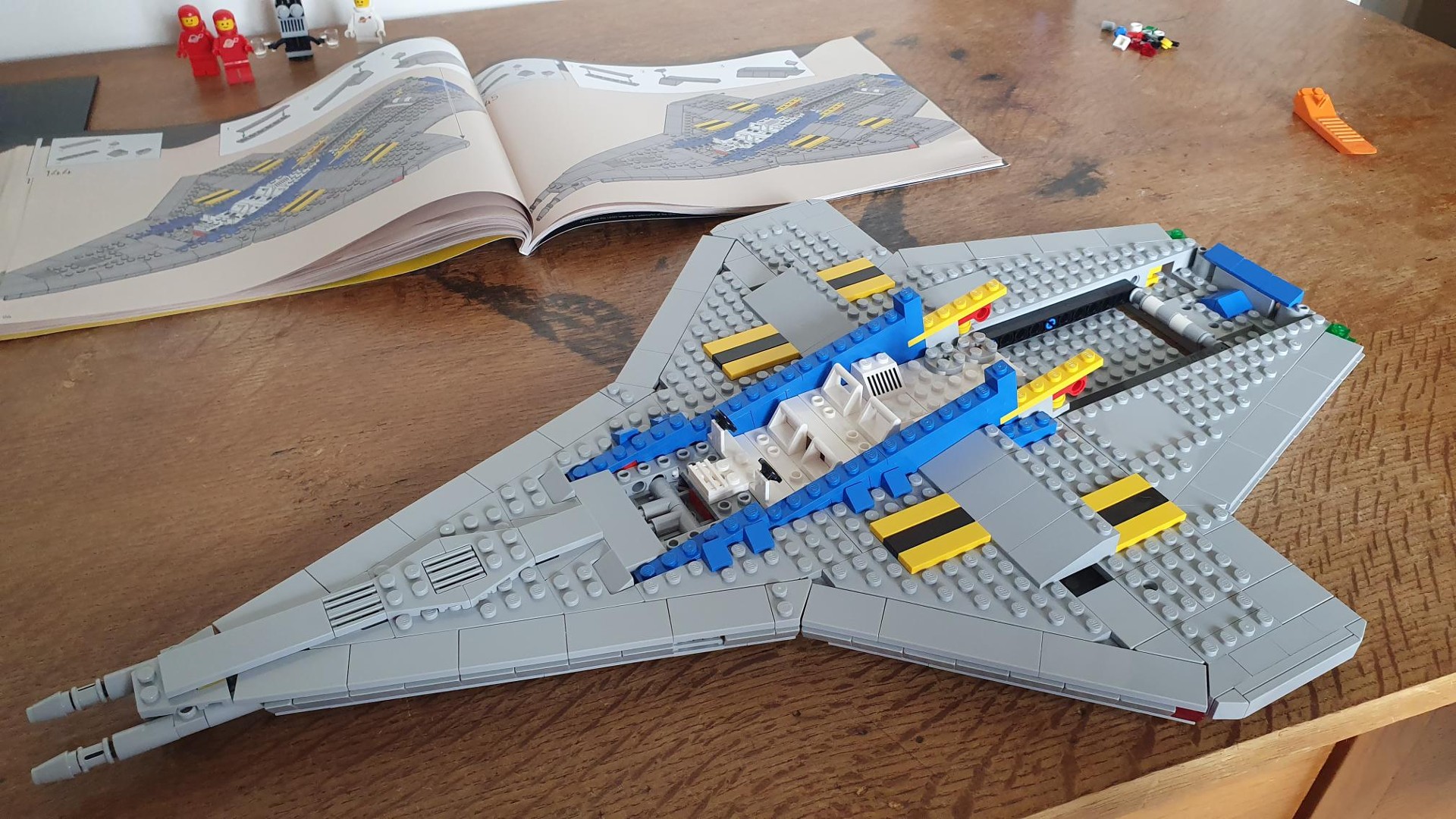
We found the experience of building the Galaxy Explorer to be smooth, satisfying, and not too long – it took us an enjoyable three hours. There are nine bags of bricks, but we were able to progress through them quite rapidly, and there’s a lovely sense of progression to the build as each bag adds new layers.
The design of the old Galaxy Explorer (numbered as 928 in Europe, 497 in the United States), was based around plates, which all had to be carefully aligned, but anyone expecting a similar build for this new version will be surprised. Construction kicks off with a framework made from older-style Technic beams held together by pins, and at an early stage we wondered where this was going. But by the end of the first bag the shape and huge size of the spacecraft is apparent, and the mechanics of the retractable landing gear are already in place. Note that sometimes aligning the Technic beams with all the pins can be a little tricky, and younger hands might need some help here (that said, the age range of the set is officially rated 18+).
Bag 2 introduces plates as the base of the spacecraft is covered with wedges and rectangular plates coming together neat and tidily, and this stage of the build is nicely intuitive – we barely had to look at the instructions to see where each piece went. Details were added quickly as we progressed further in the build, with some ingenious choices made to result in the various slopes and angles that we see in the shape of the spacecraft – more on these later.
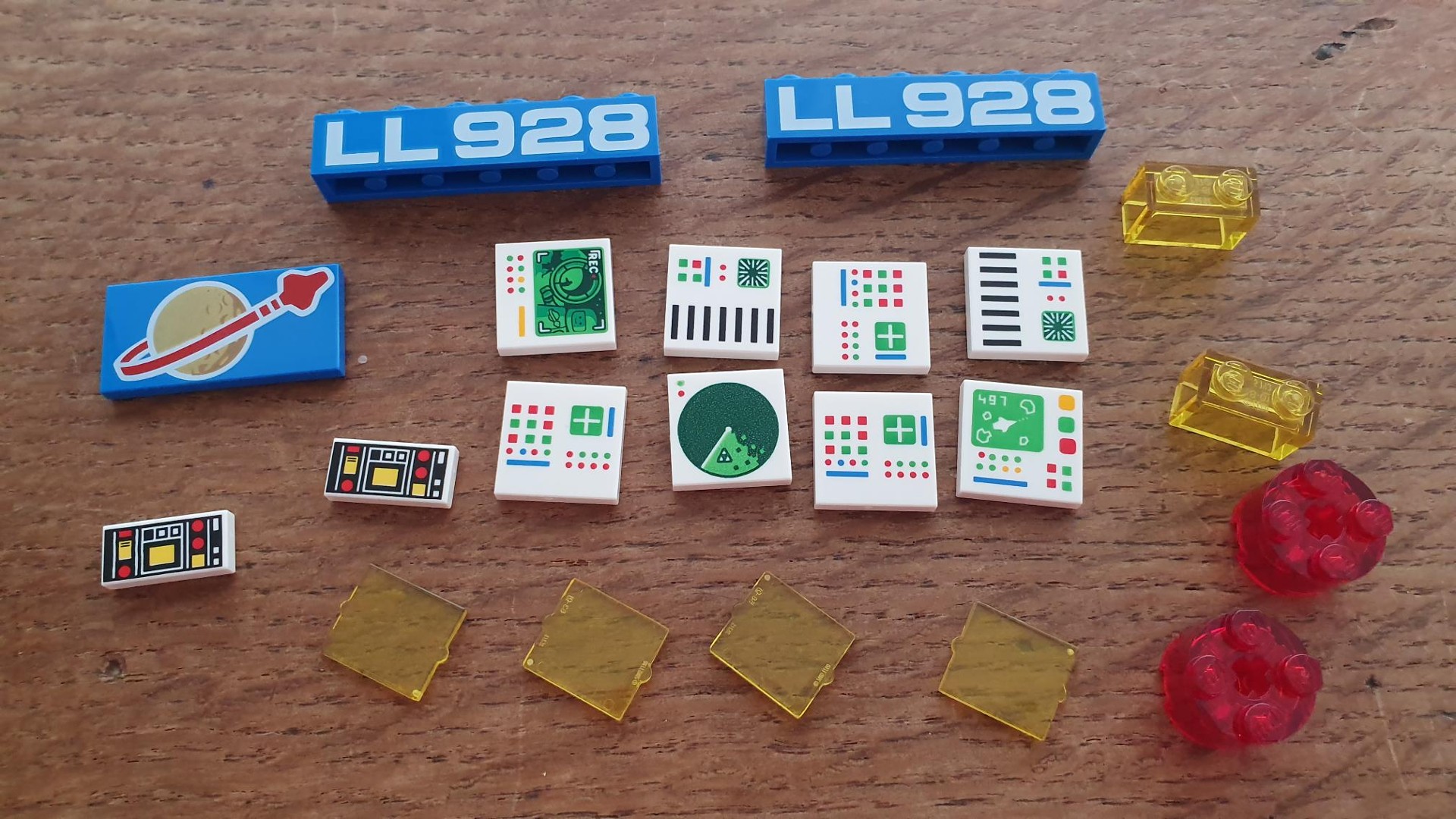
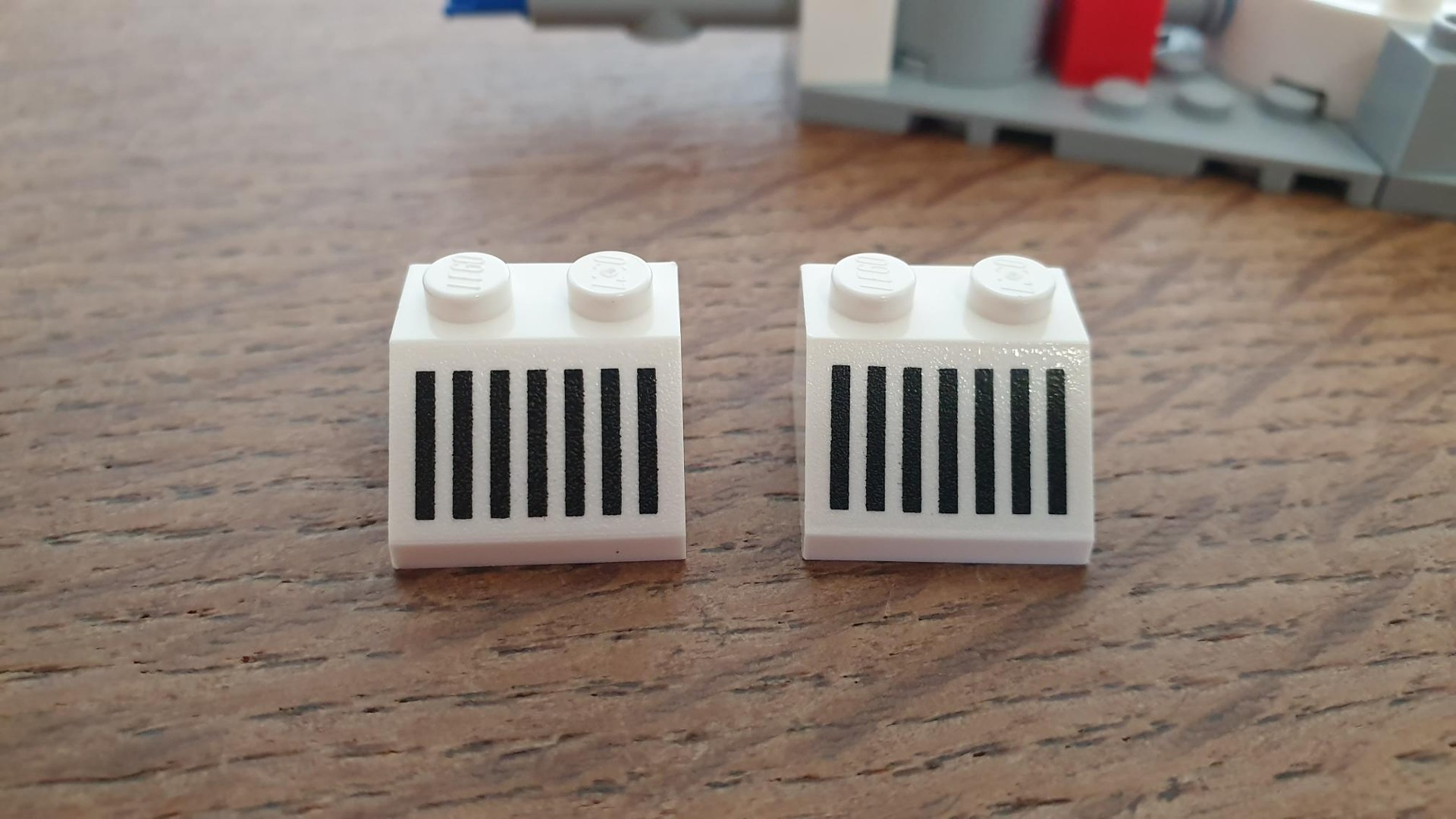
Our favorite part of the build was probably bag 7, as here we furnished the interior of the Galaxy Explorer with computers, controls, beds, storage lockers, windows, and even an airlock into the cargo bay. All the printed tiles are a delight to see – this set includes no stickers, thankfully! – from blue 4 x 2 stud-less tiles with the familiar Classic Space logo of a spaceship circling a planet, to flat computer screens with designs similar to computers in old sets. There’s even the return of the 2 x 1 printed computer tile from the M-Tron/Blacktron 2 era in the early 1990s, and white 2 x 2 slopes with printed grill lines that were common in the original Classic Space sets of the 1980s.
The final bags contain the pieces for the various engines and rocket thrusters on the Lego Icons Galaxy Explorer. On the original 1979 version these were simply built out of cylinders, cones, and nozzle pieces. The engines on the new Galaxy Explorer are far more intricate. To give you an idea, on the old set the side maneuvering thrusters were one piece, but here they are imaginatively brick-built using buckets.
The instructions are very clear and easy to follow – there were only a couple of occasions where we missed things, mostly as a result of our enthusiasm causing us to get ahead of ourselves. What is nice is that the instruction book is annotated. For example, during assembly with bag 1 when it’s not entirely clear at that stage what part of the spacecraft we’re building, the booklet explains that we’re putting together the landing gear. Further into the build, the booklet points out deviations from the original build, or where various aspects of the original design have been expanded upon. You get the sense that you are building something that has a deep history in the Lego universe.
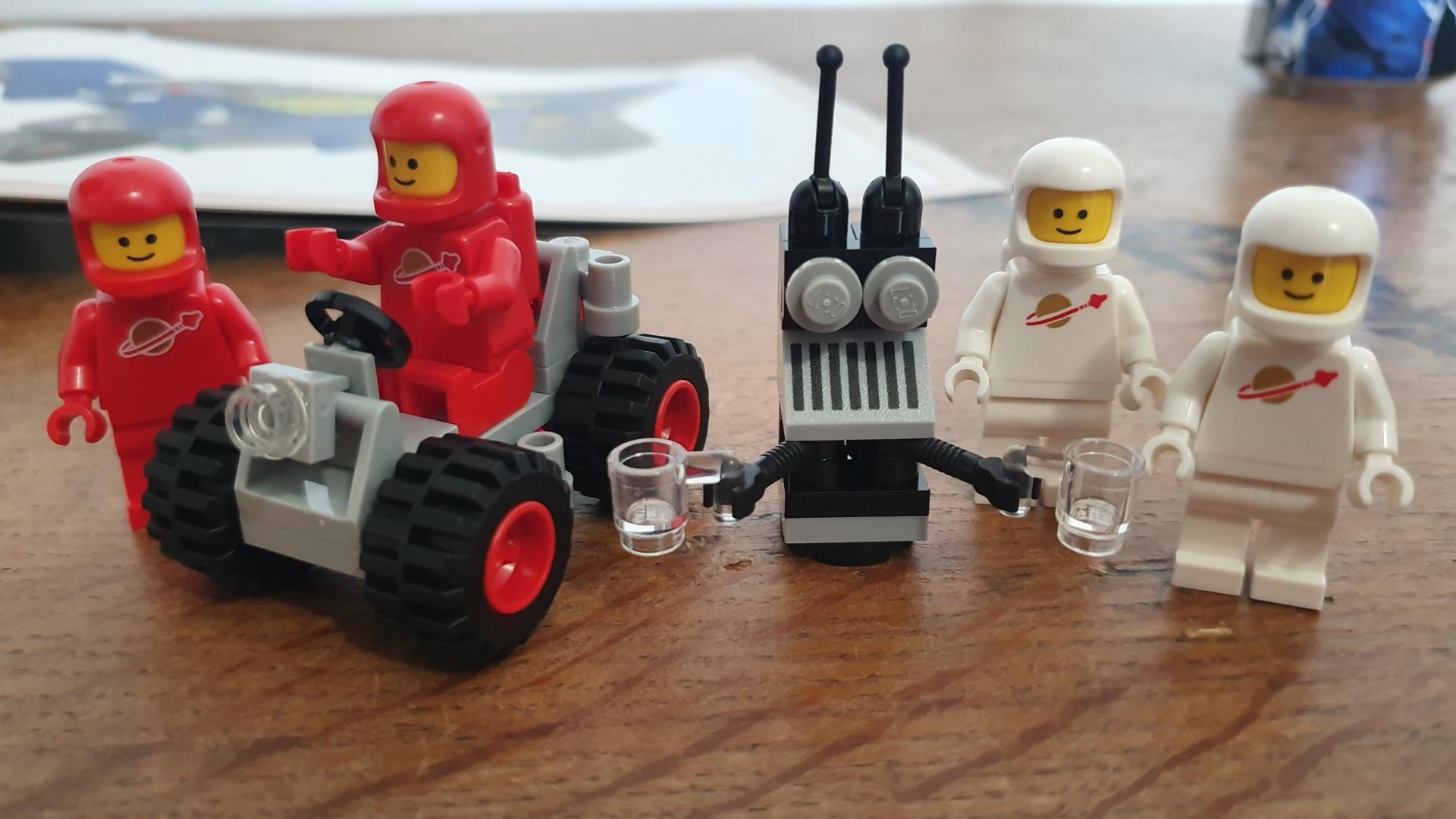
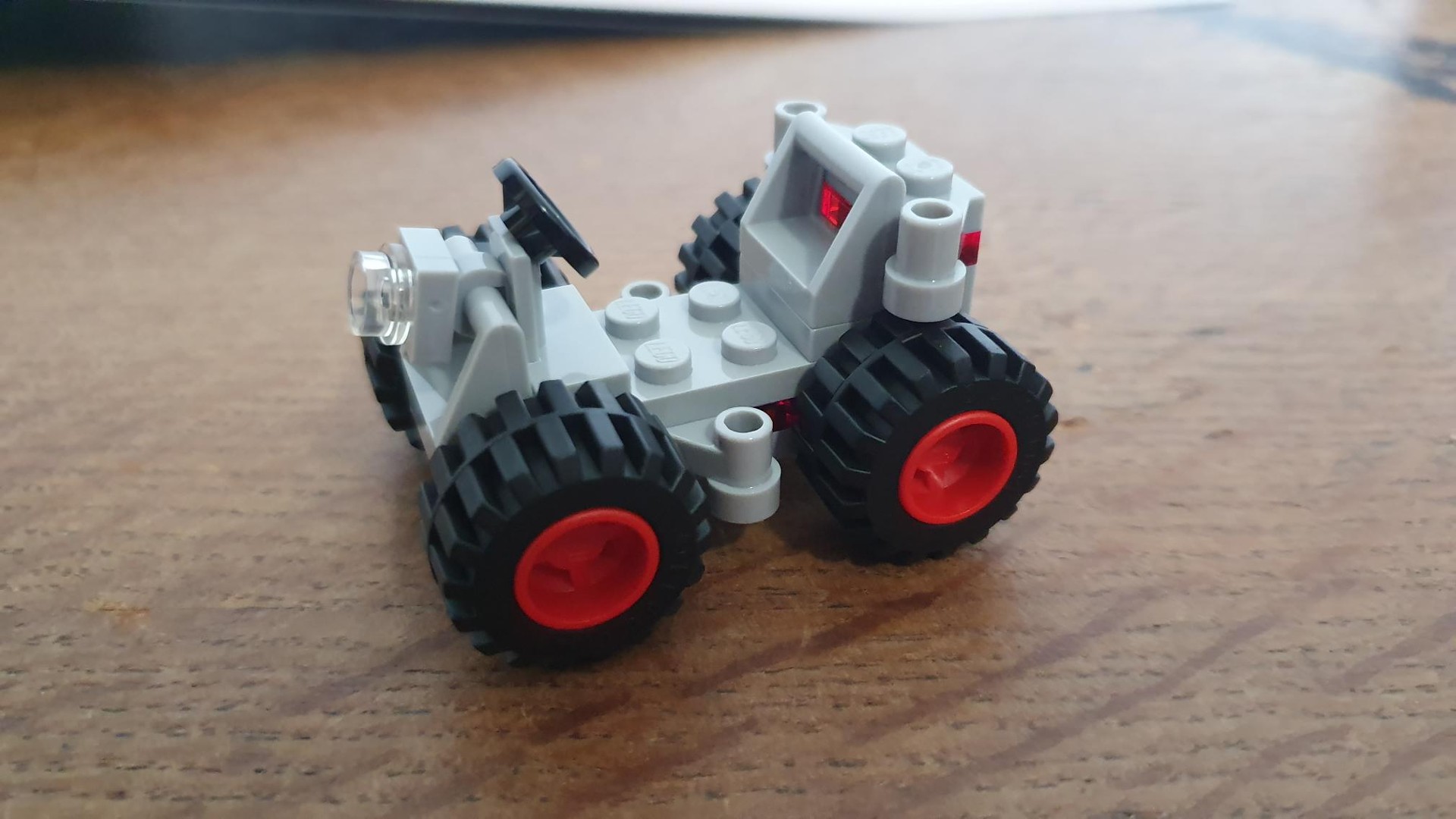
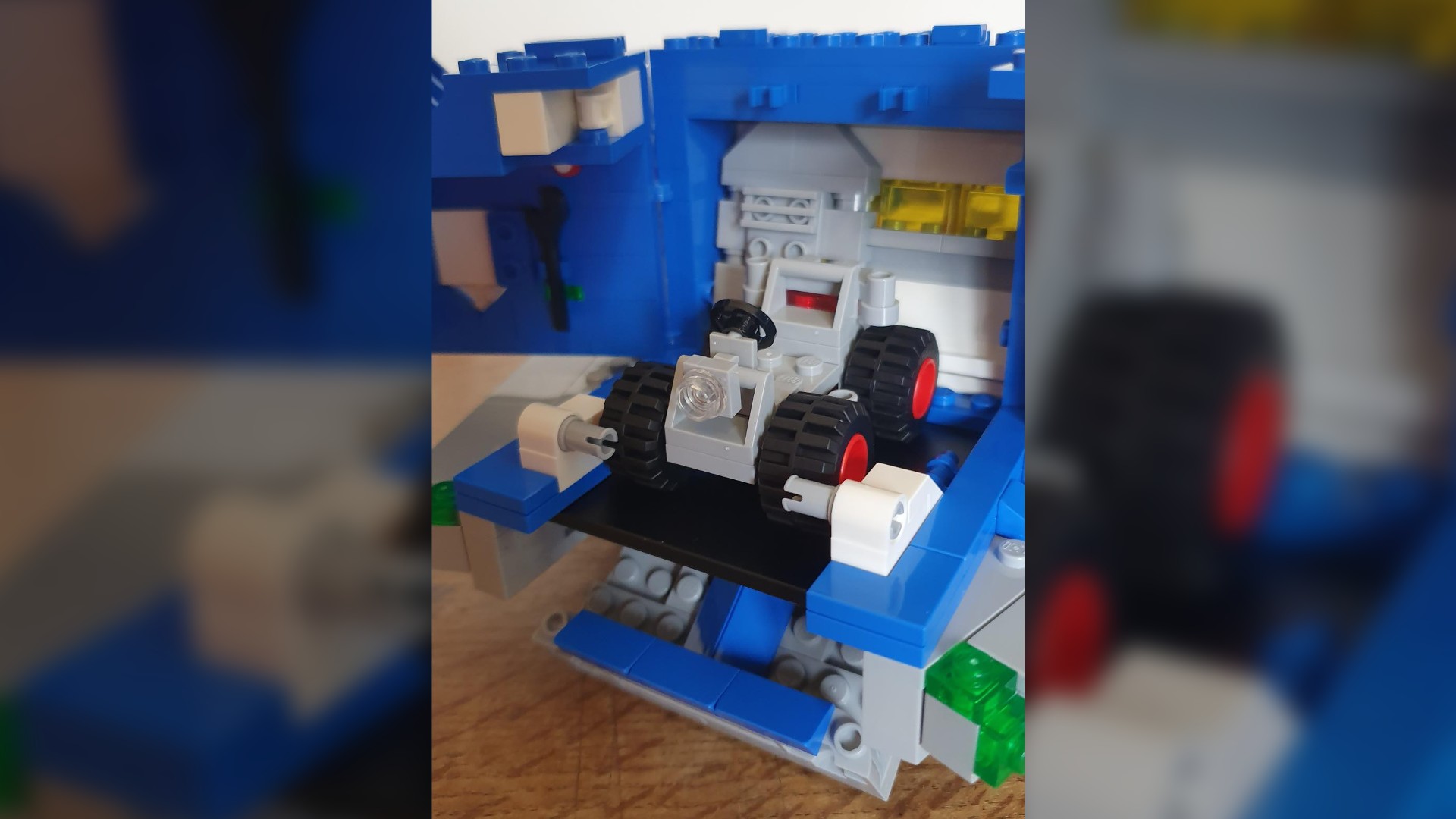
There are four classic space minifigures included, two white and two red astronauts. According to the official Classic Space color scheme, astronauts in white suits are explorers and the astronauts in red suits are pilots. One of the storage lockers contains a black air tank for an astronaut, but no black-suited astronaut is included. The minifigs are spread throughout the bags, and feature the old visor-less helmet but with the chin strap reinforced so that it doesn’t crack. The old helmets had a habit of breaking, as is famously illustrated by Benny’s helmet in the Lego Movie and its sequel.
The set also includes a small brick-built robot, which is a replica of the XT5 robot from set 6809 that was released in 1987. Plus, there’s a simple lunar-rover style vehicle that can fit in the cargo bay.
Lego Icons Galaxy Explorer review: Design
- Looks fantastic
- Great modernization of a classic design
- Nostalgia overload!
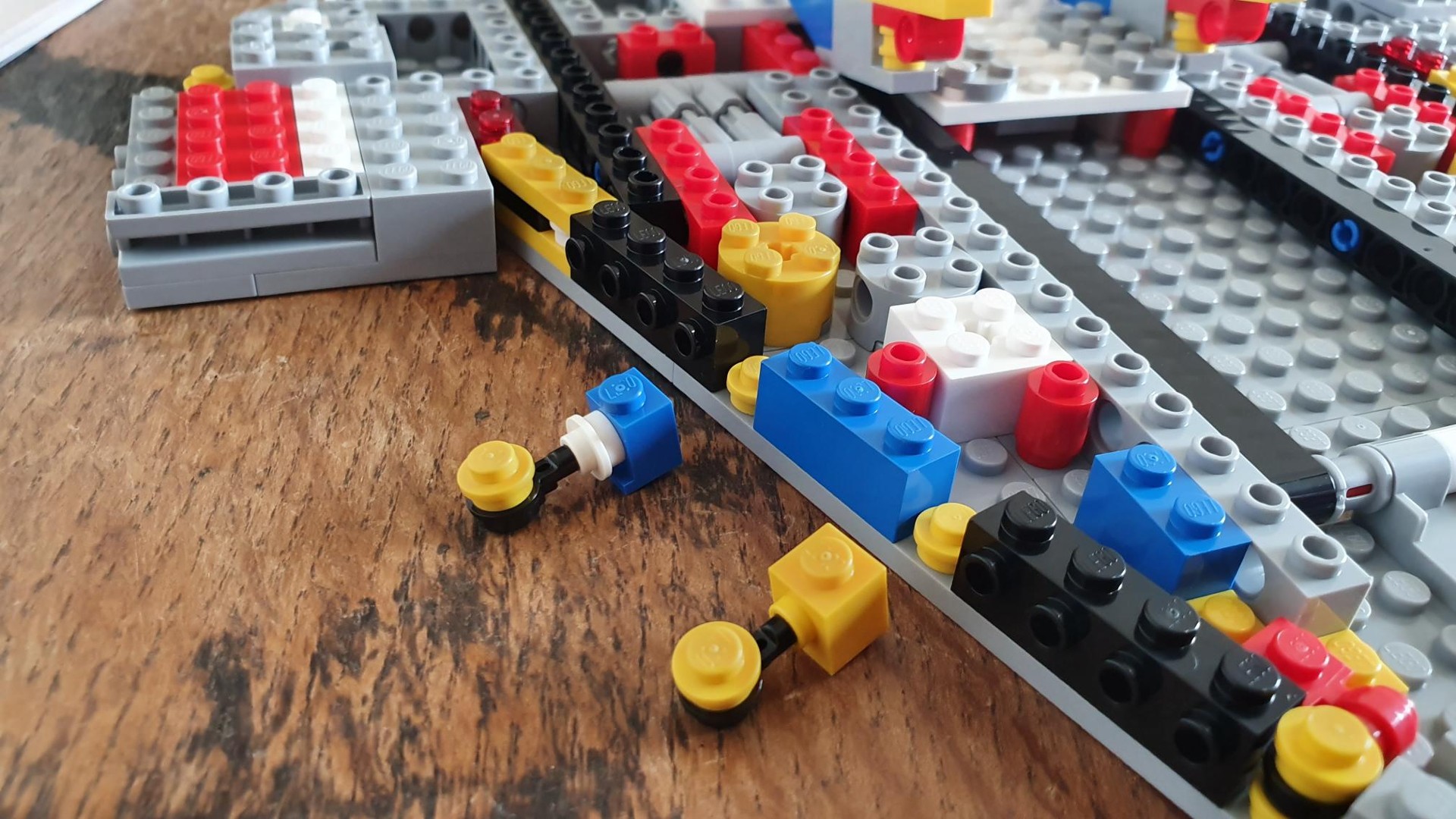
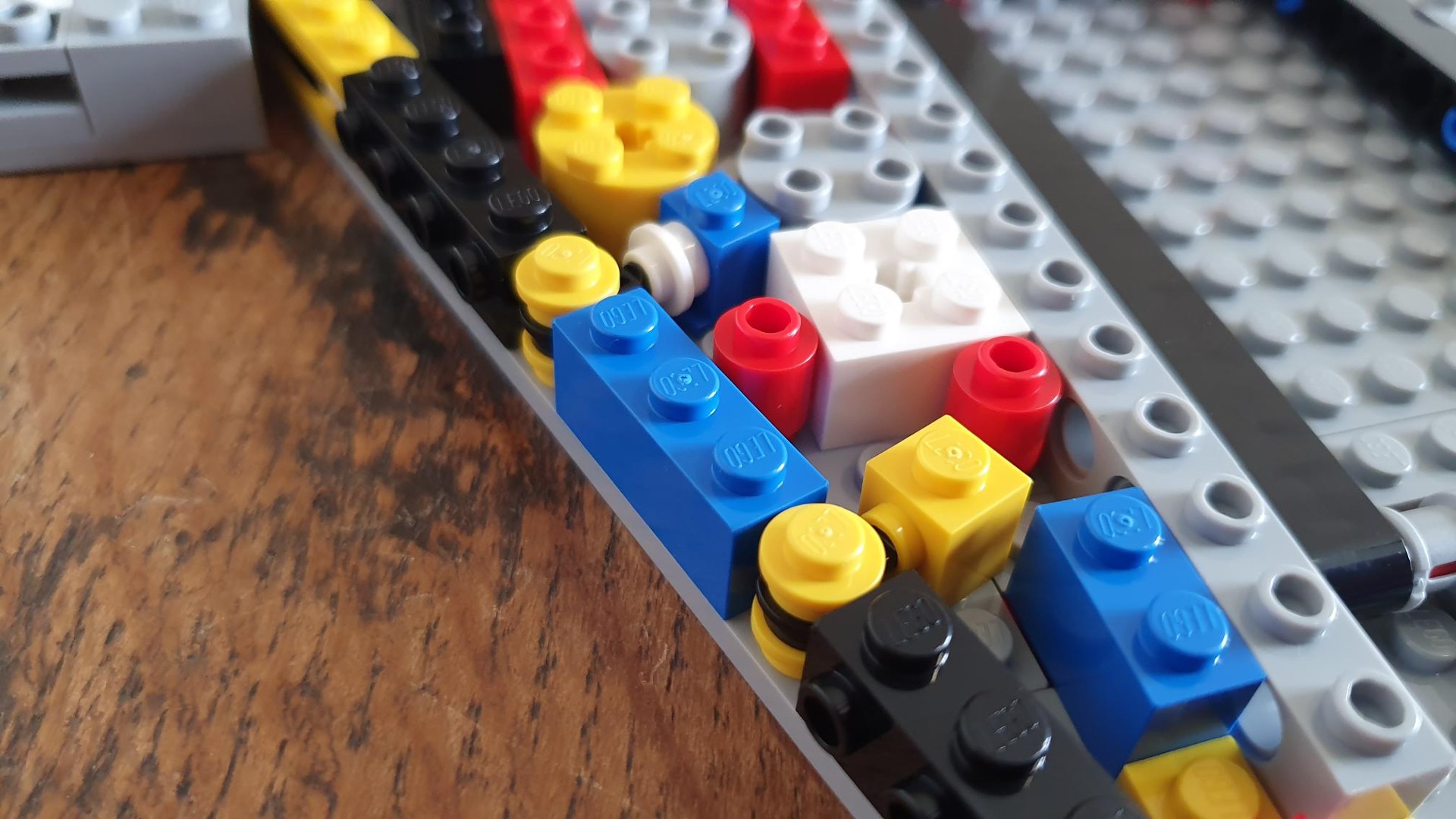
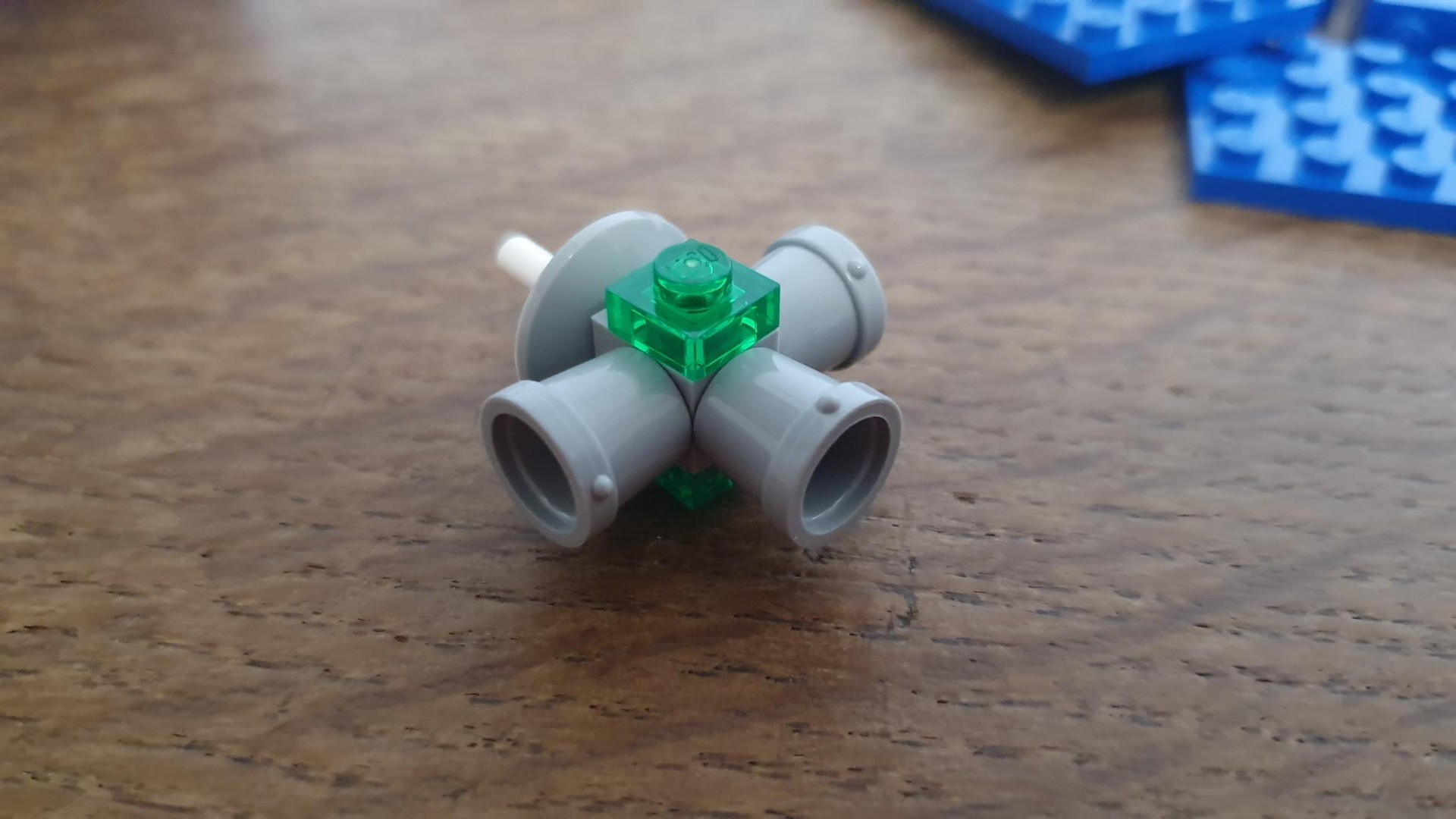
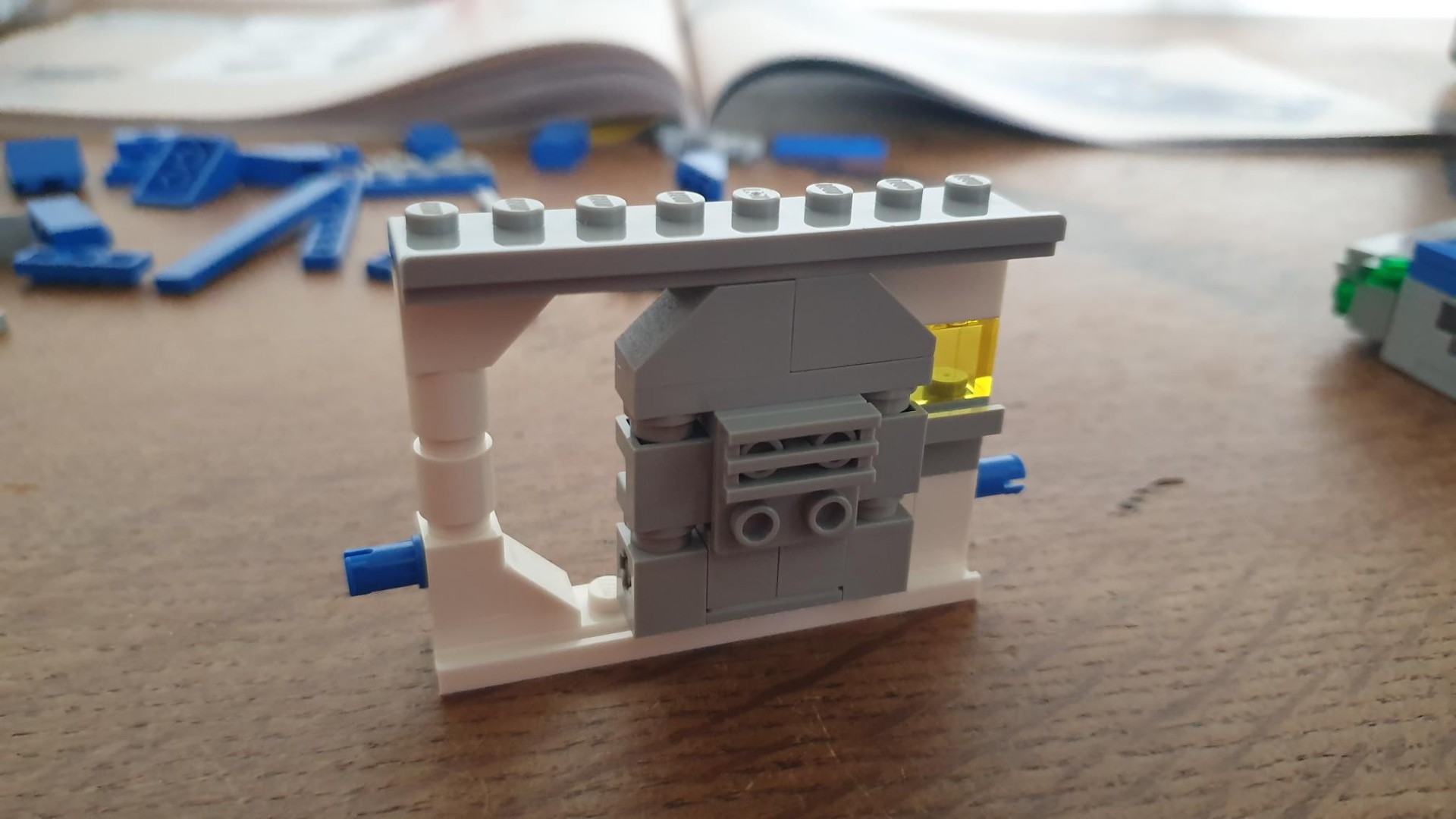
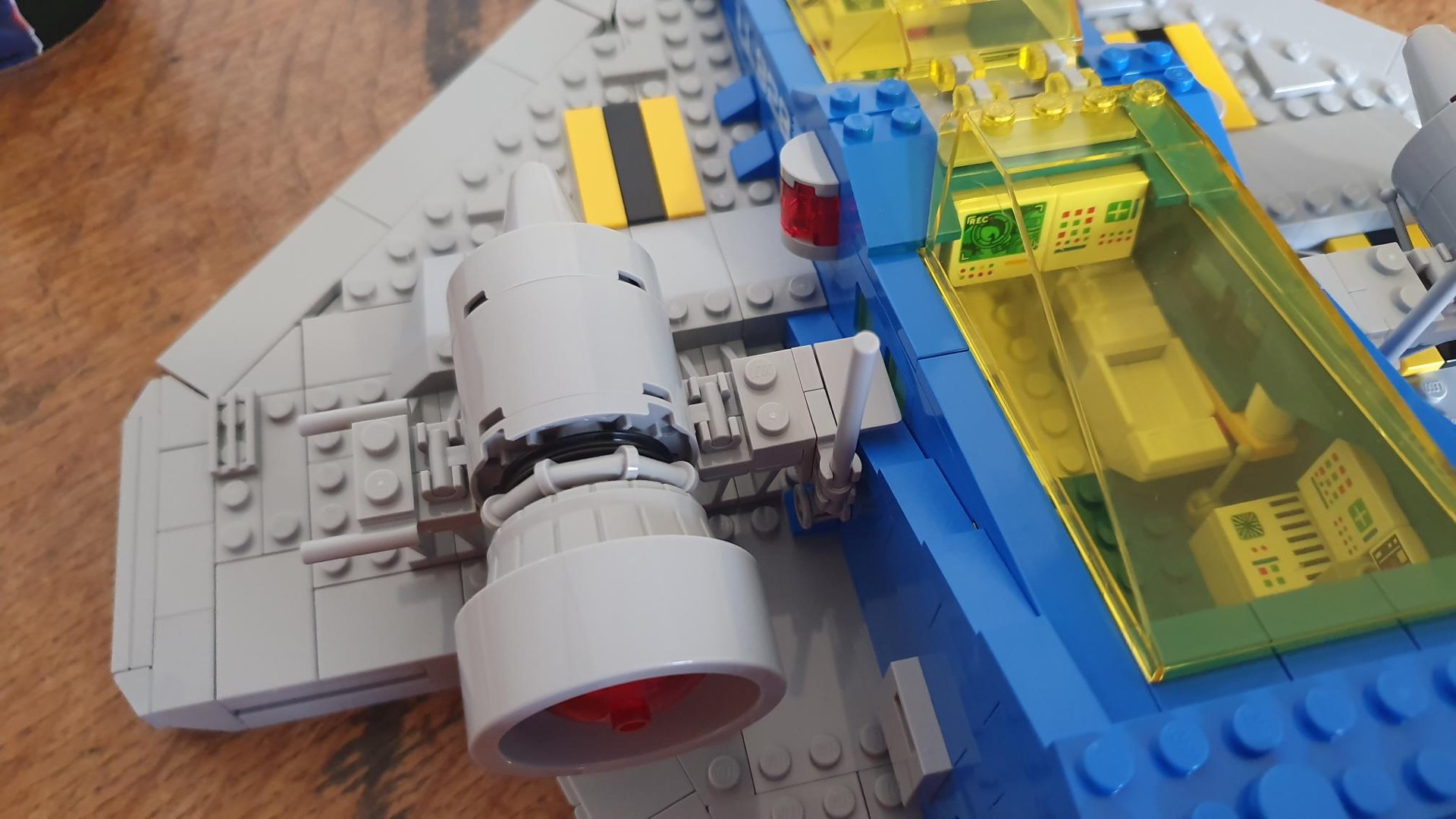
Many people who grew up with Classic Space and the original Galaxy Explorer will be buying this new set out of nostalgia, and if this is their first modern Lego set then they might be surprised by some of the building techniques and the contemporary design style, which is far more complex than those old sets. We think that this is to the newer set of the Lego Icons Galaxy Explorer’s advantage – the design is super smooth with some great innovations.
Take the clever ways in which the set’s designers have created the various slopes and signature angles of the ship. The slanting walls of the cockpits are achieved with beams fastened to pinned hinges, while the angles of the wings feature beams latched into place using studs, headlight bricks, and pan-shaped handles. And, while much of the hull has studs on top, there are some SNOT (studs not on top) techniques used on the wingtips.
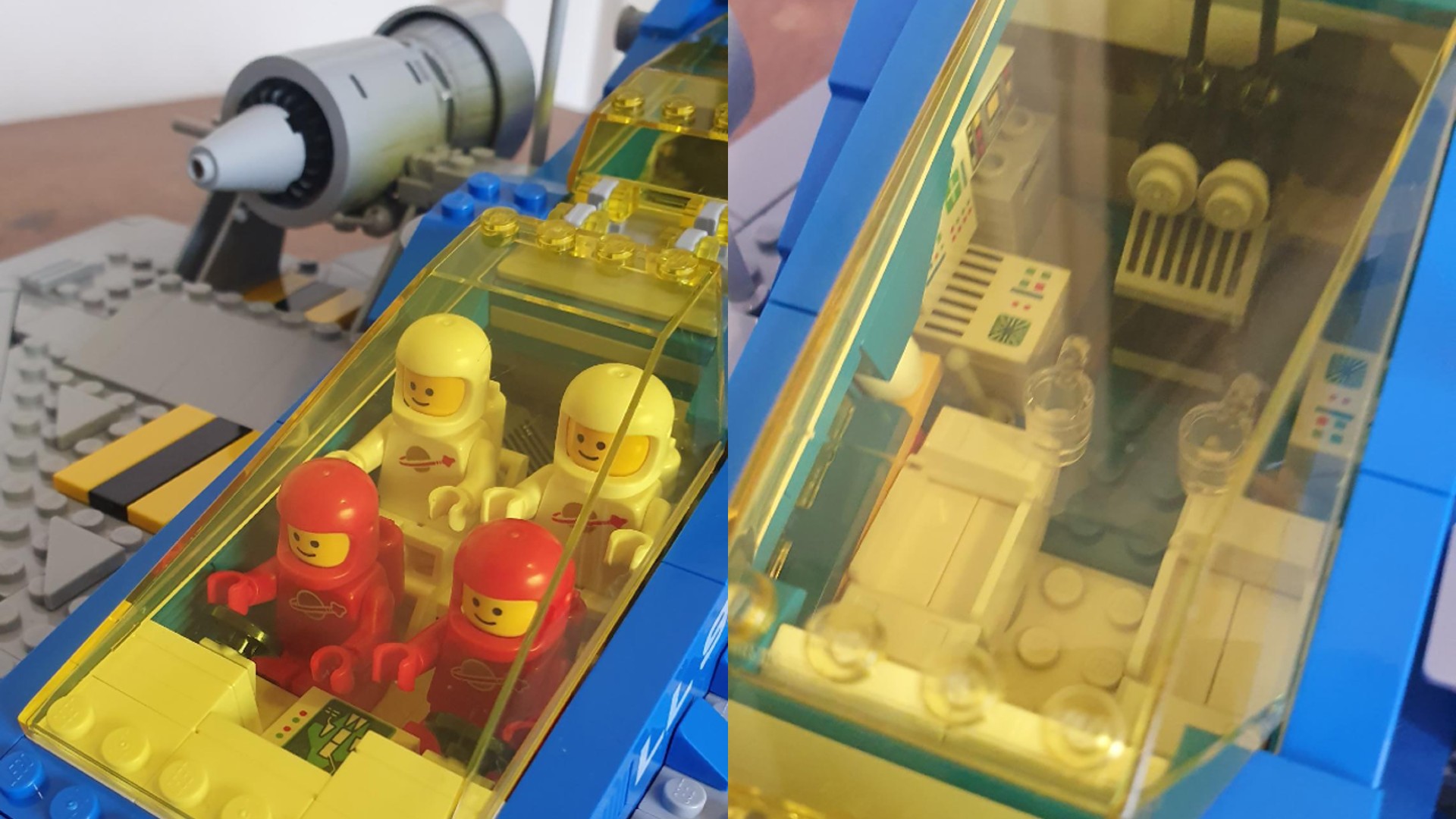
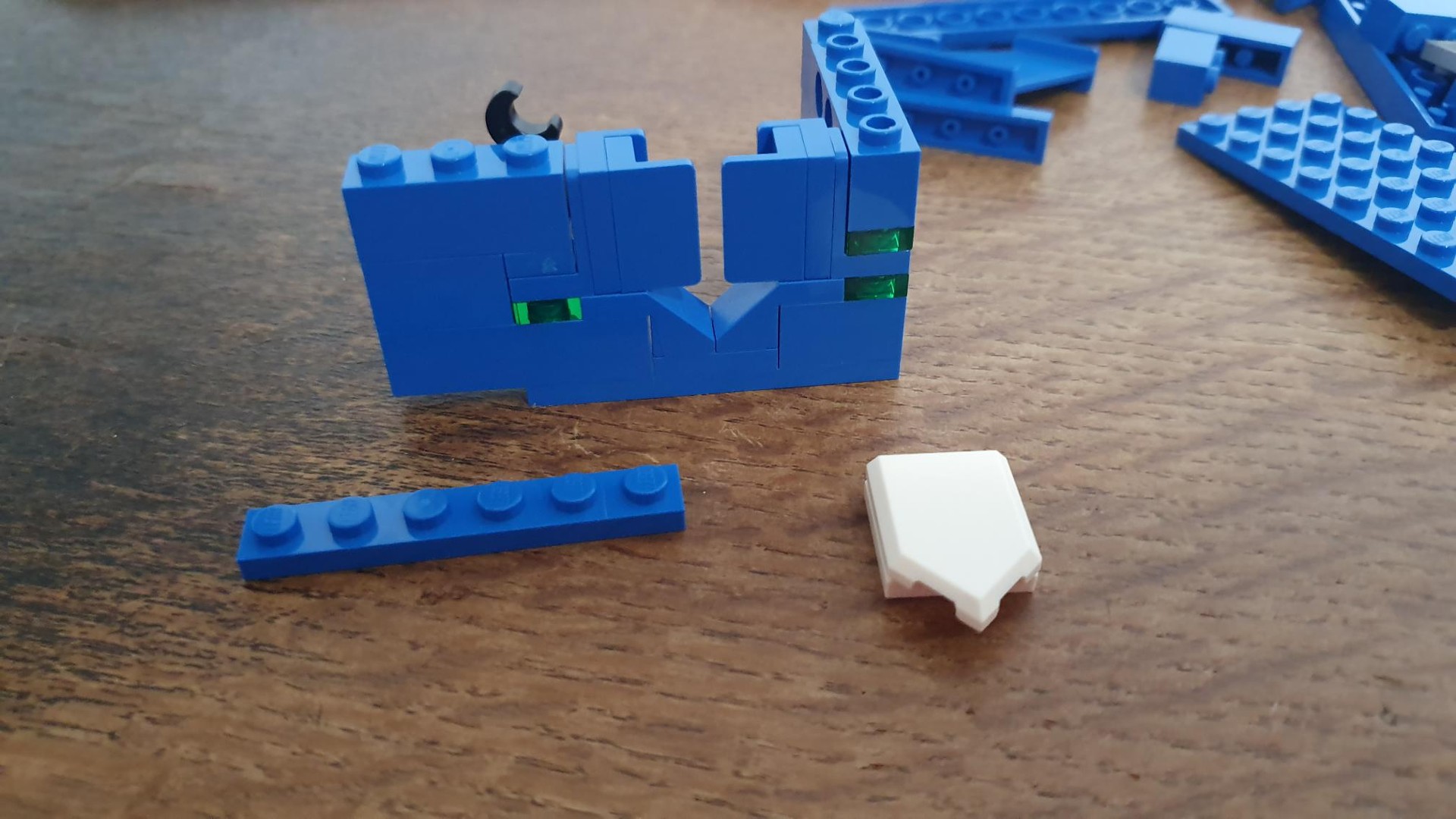
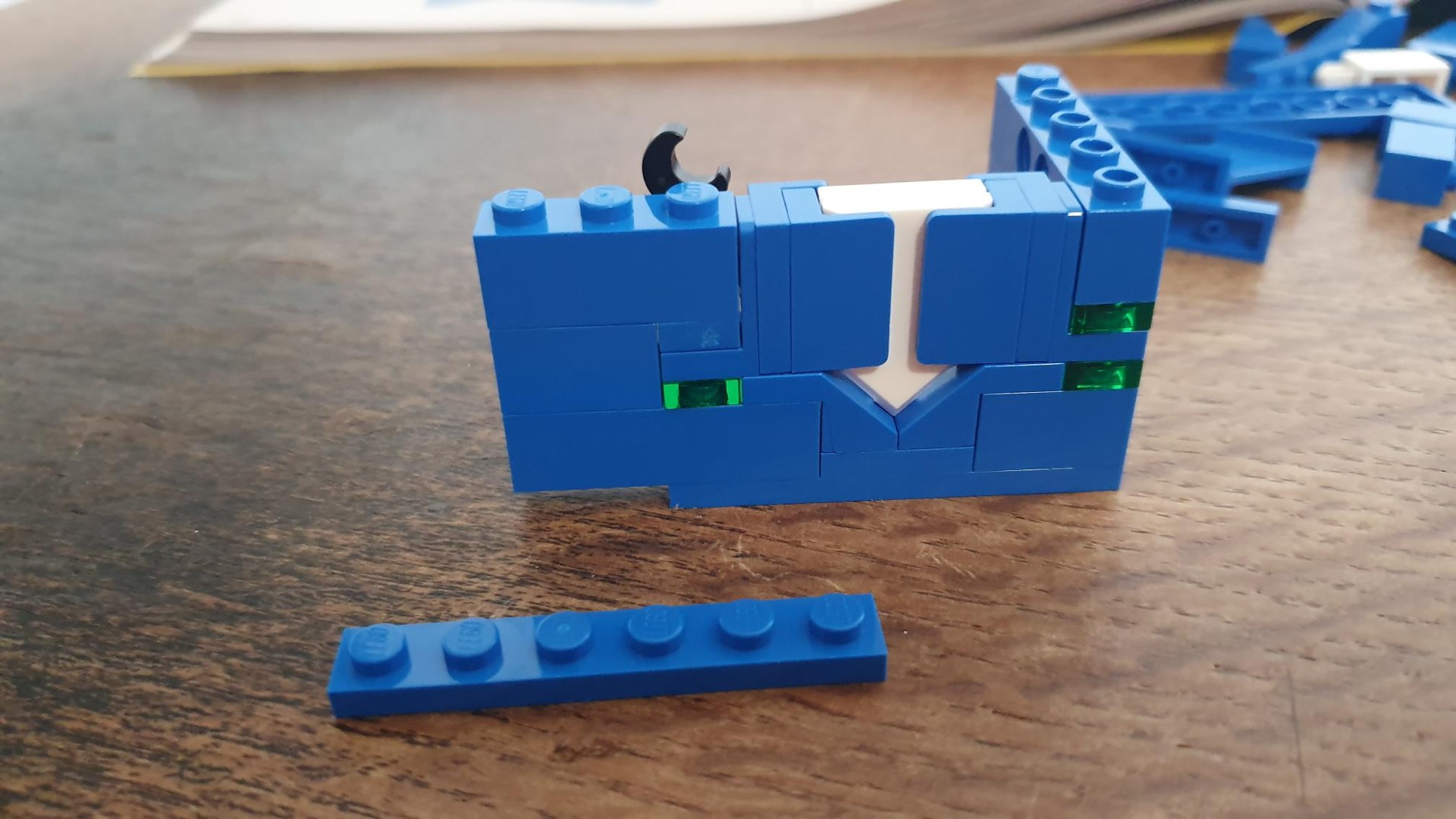
Our favorite bit of design innovation are the downwards arrows on the cargo bay, indicating the ramp that drops down. On old Classic Space sets the white arrows were printed onto 2 x 1 bricks. In this recent version they are inventively created using a white shield from Lego’s Nexo Knights line that fits into a brick-built slot with an arrow-shaped window. Very clever.
The instruction booklet makes a point of saying that the reimagined Lego Galaxy Explorer design uses only colors that were available in 1979. The exception is absence of the ‘medium stone gray’ color, which is no longer produced. And, befitting a set designed to celebrate Lego’s 90th anniversary, several classic 2 x 4 bricks – the mainstay of Lego sets from years gone by – are included in the build, which made us smile.
The new Lego Icons Galaxy Explorer is huge, being 20.5 inches (52 cm) long and 12.5 inches (32 cm) wide. When placed side-by-side with the original Galaxy Explorer we see that the updated version is approximately twice the size. As such, it’s not quite as ‘swooshable’ as the original and you’ll need two hands to fly it around the living room, but it feels sturdier (and heavier) than its predecessor.
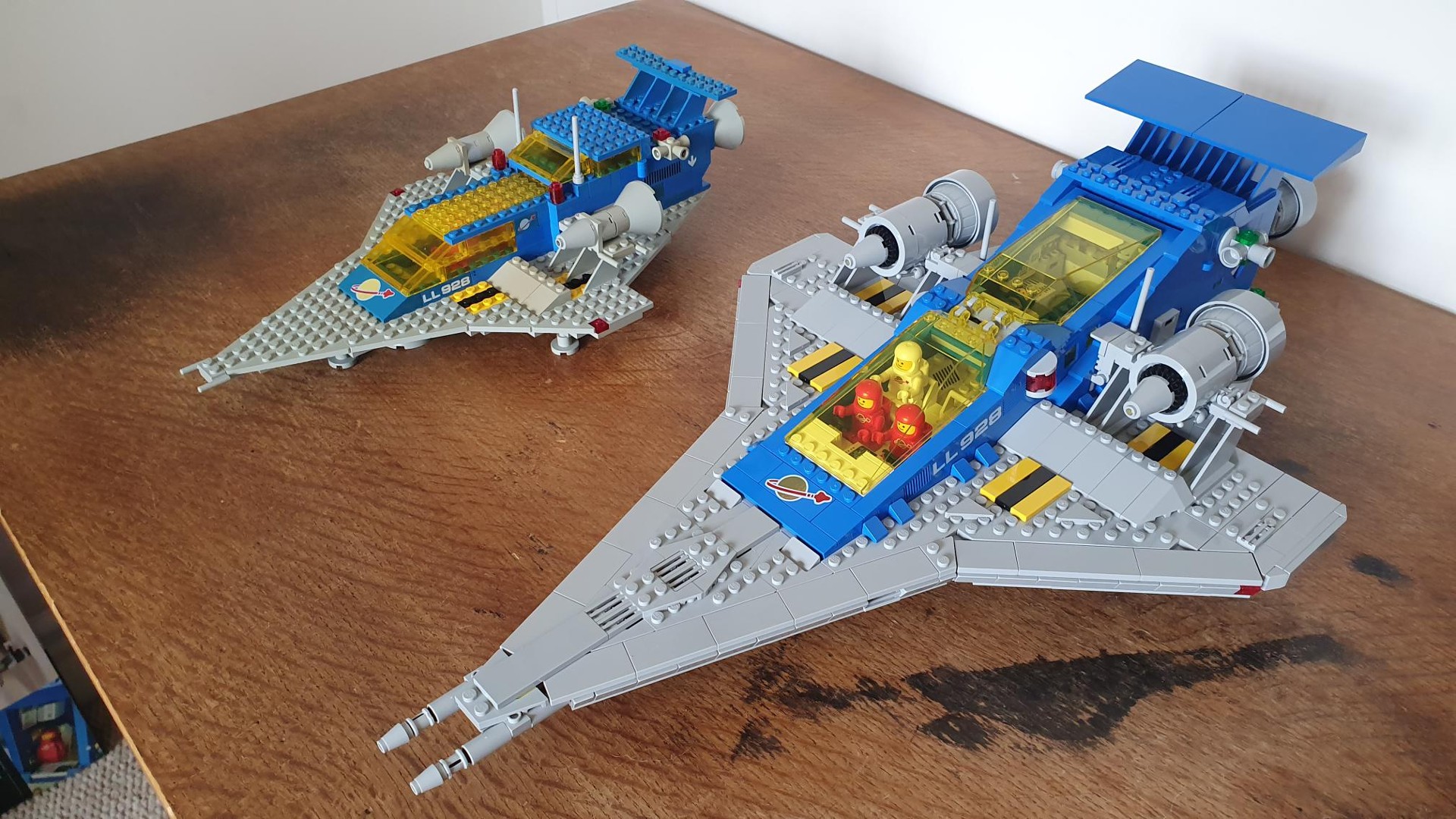
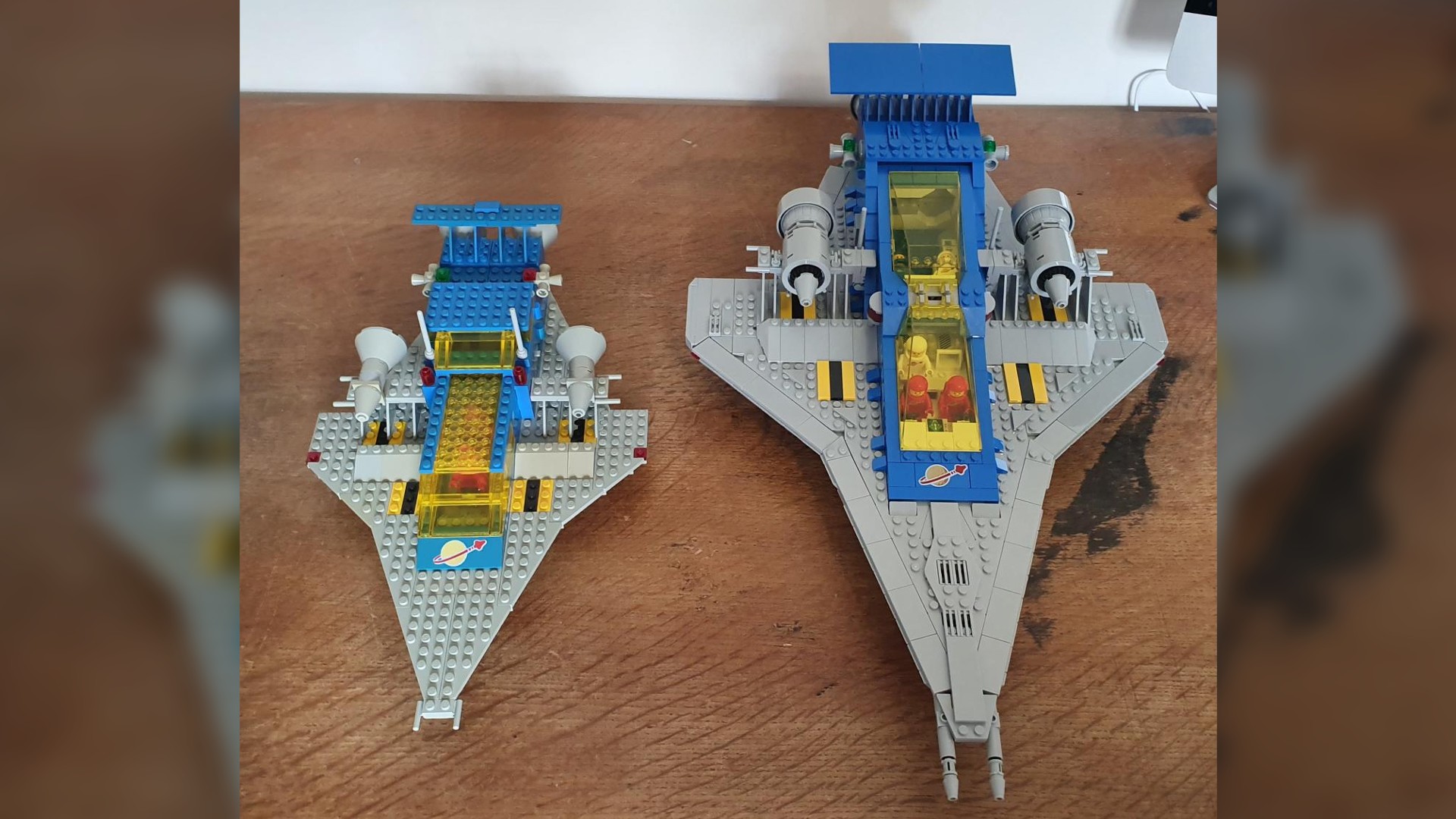
The original Galaxy Explorer also came with two baseplates – a landing pad and a crater – as well as a small lunar base. The latest model does not include baseplates or a ground base. Lego’s designers are on record as saying that they considered a landing pad but decided that the new Galaxy Explorer would be too large for it, which we concur with. However, we think that a ground base with a radar dish, possibly used for space-traffic control, would have been a nice addition and added a fun extra dimension. The other minor criticism that we have is how the two transparent yellow cockpit canopies are packaged in the box – they are in bag 8 where they are able to rub up against other bricks, and one of our canopies had scratches on it as a result. We feel they would be better packaged separately.
Although we didn’t build them, two other Lego models can be constructed out of the pieces of the Lego Icons Galaxy Explorer. These are modern versions of the Space Transport (918) and Space Cruiser (924), which are smaller vehicles and instructions for these will be available on the official Lego website soon. Of course, if you want all three sets on your shelf, then you’re going to have to buy three Galaxy Explorers! That can get expensive, but, on the other hand, if you are a Lego fan who builds their own creations then buying three sets is an attractive proposition since they are fantastic parts packs for all kinds of Classic Space builds!
Should you buy the Lego Icons Galaxy Explorer review?
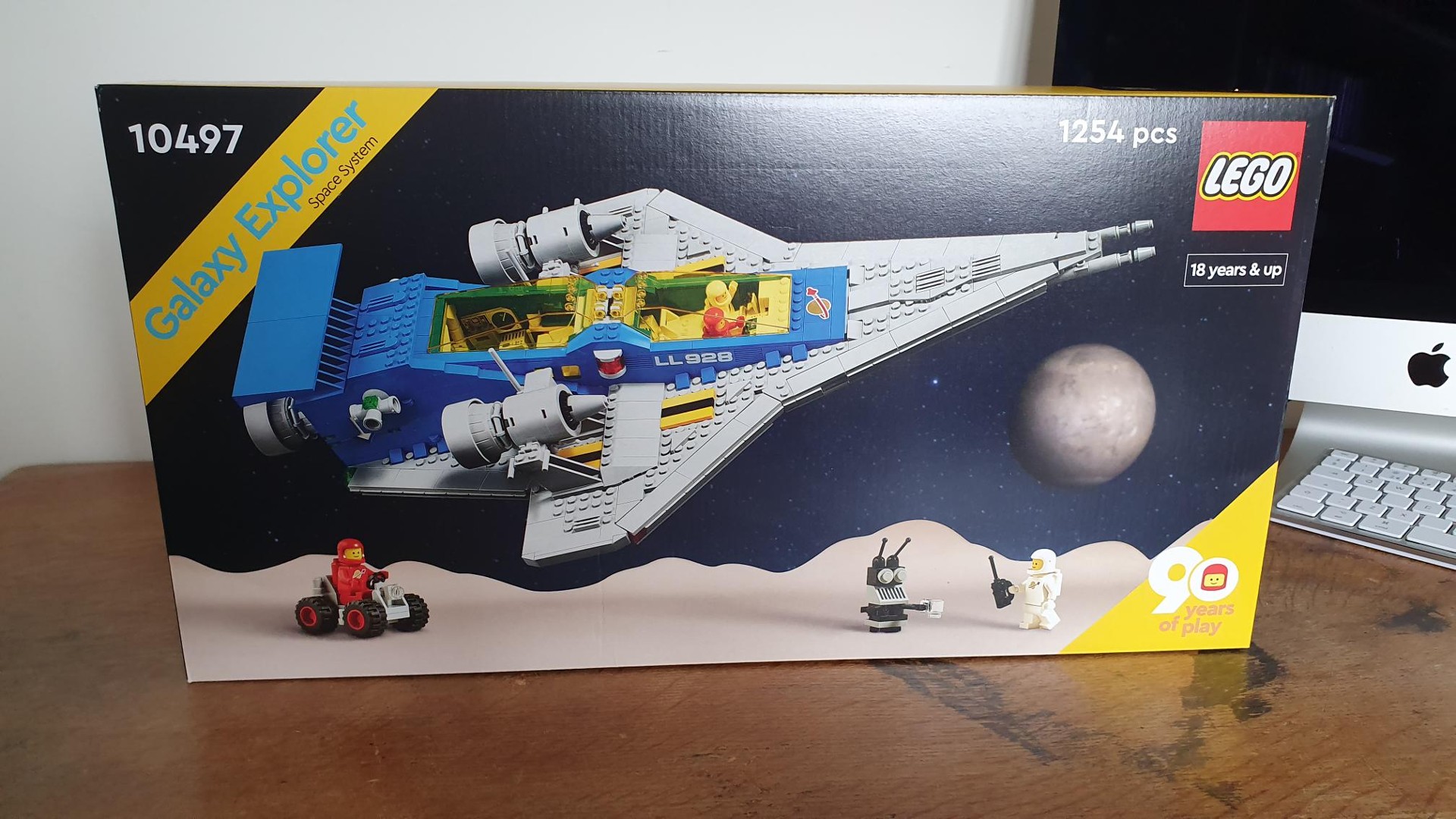
The short answer is, yes! It is an enjoyable build, a clever design, and it is a fantastic centerpiece for any Lego Space collection. It’s also competitively priced, and even if you don’t have nostalgia for the original, this reimagined version offers plenty of fun details to enjoy. What better way is there for a space enthusiast to celebrate Lego’s 90th anniversary?
Other Lego space sets to consider
Lego’s Classic Space universe is intended to be the future of our own, which means that they are designed to be related to our current space exploration programs, but perhaps a few hundred years into the future. As such, the Lego City range of space sets inspired by NASA's Artemis 1 moon mission even feature the Classic Space logo. So, the Rocket Launch Center ($159.99/£124.99), the Lunar Research Base ($129.99/£89.99), the Lunar Space Station ($79.99/£54.99), and the Lunar Roving Vehicle ($39.99/£24.99) would all be great sets to accompany the Galaxy Explorer.
We’d also highly recommend the Lego NASA Space Shuttle Discovery ($199.99/£169.99) – it’s a fantastic replica of the real deal and a fun build – and the super impressive Lego NASA Apollo Saturn V ($119.99/£104.99). If you’re after something a bit more sci-fi themed, than the best Lego Star Wars sets feature plenty of amazing spacecrafts to choose from.
Join our Space Forums to keep talking space on the latest missions, night sky and more! And if you have a news tip, correction or comment, let us know at: community@space.com.

Keith Cooper is a freelance science journalist and editor in the United Kingdom, and has a degree in physics and astrophysics from the University of Manchester. He's the author of "The Contact Paradox: Challenging Our Assumptions in the Search for Extraterrestrial Intelligence" (Bloomsbury Sigma, 2020) and has written articles on astronomy, space, physics and astrobiology for a multitude of magazines and websites.
